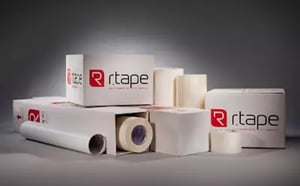- Waterproof Synthetic Paper
-
P.O.P. Displays, Banner Stands & General Signage

- P.O.P. Displays, Banner Stands & General Signage
- View All
- SYNAPSE OM
- ClingZ®
- Trifecta®
- VinylEfx®
- Premium Vinyl
- Classic Vinyl
- PolyEfx®
- ChalkTalk®
- EZ-Color™
-
Window, Wall & Floor Graphics

- Window, Wall & Floor Graphics
- ClingZ®
- Ztac™
- Sign-Ad®
- Hi-Stat®
- Trifecta®
- VinylEfx®
- EZ-Color™
- Overlaminates
- Mounting Films
- Barrier Film
- Wall Graphics®
- ChalkTalk®
- Walk-On Graphics®
- Dye Sublimation
- Glass Finishes
-
Outdoor Graphic Media

- Outdoor Graphic Media
- NextBond™
- Premium Vinyl
- Overlaminates
- Mounting Films
- SYNAPS OM
- SYNAPS XM
- VinylEfx®
- CV300 Series™
- Overlaminates
- Cut Films
- Application Tapes & Premasks
- Carbonless Papers
-
Extruded Films

- Extruded Films
- View All
- ClariCap®
- ClariGuard®
- Security Films
- PETg
- Polycarbonate
- Applications
-
Printer Compatibility

- Printer Compatibility
- View All
- Latex
- Eco-solvent/Solvent
- UV Wide Format
- Offset
- HP Indigo
- Digital Dry Toner/Laser
- Screen
-
Sustainability

- Sustainability
- NextBond™
- Nekoosa Promise™
- Corporate Sustainability & Stewardship
- About Us
- Blog
- Nekoosa Bucks
- Request A Quote
- Resources
- Find A Distributor
- Job Openings
- Contact Us
- Waterproof Synthetic Paper
- P.O.P. Displays, Banner Stands & General Signage
- Window, Wall & Floor Graphics
- Dye Sublimation
- Glass Finishes
- Outdoor Graphic Media
- Overlaminates
- Cut Films
- Application Tapes & Premasks
- Carbonless Papers
- Extruded Films
- Applications
- Printer Compatibility
- Sustainability
- About Us
- Blog
- Nekoosa Bucks
- Request A Quote
- Resources
- Find A Distributor
- Job Openings
- Contact Us
Storing Application Tape
Application tape manufacturers package their products in plastic sleeves, then box them in corrugated containers to protect the tape from light, dirt and humidity. If you’re not going to use the tape immediately, keep it in its box. Tape not stored in boxes is exposed to light, which can cause yellowing. Even shop lighting can yellow application tape.
 Stacking rolls of application are horizontally can cause a flat spot on the tape roll, making unwinding more difficult.
Stacking rolls of application are horizontally can cause a flat spot on the tape roll, making unwinding more difficult.
Yellowing Application Tape
This yellowing occurs because the light begins to degrade the natural rubber adhesive. Although this degradation isn’t generally significant to adversely affect product performance, it’s aesthetically unpleasing.
Yellowing caused by light detracts from an application tape’s appearance. However, storing a pressure-sensitive product in an excessively hot environment is more harmful. Prolonged exposure to temperatures above 85°F prematurely ages an adhesive and degrades its performance. Years ago, I met one sign maker who kept his application tape in the refrigerator. Wonders never cease! My advice is to store your beer in the fridge, and keep your tape in your shop’s coolest area.
How to Elongate the Shelf Life of Tape
As tapes age, their performance often declines and becomes problematic. Old application tape can “block-up” on the roll — the adhesive binds to the facestocks first surface, making the product difficult, and often impossible, to unwind. All pressure-sensitive products have warranted shelf lives; for application tape and premask, it’s six months.
Consequently, you should rotate your tape inventory. The material first entered into inventory should be used first. Furthermore, handle your application tape with care — damage to a roll’s ends impairs unwinding the tape. The paper easily tears where it’s damaged.
Finally, application tape rolls should be stacked upright. Stacking them horizontally causes a flat spot on the tape roll, making unwinding more difficult.
SEE: Why Use a Heavyweight Paper Application Tape
-png.png?width=1120&name=ArchivedRTape_Banner%20(1)-png.png)
Search
Categories
- RTape (32)
- Application Tape (15)
- #MeetOurTeam (13)
- Effortless Signage (7)
- Floor Graphics (7)
- SYNAPS (6)
- Synthetic Paper (6)
- Specialty Print Media (5)
- Trifecta (5)
- Walk-On Graphics (5)
- Wall Graphics (5)
- Overlaminate Film (4)
- Wide Format (4)
- Vinyl (3)
- VinylEfx® (3)
- #NekoosaBucks (2)
- ClingZ (2)
- Hi-Stat (2)
- NextBond™ (2)
- Sustainable (2)
- Distribution (1)
- HP Indigo (1)
- Holiday Signage (1)
- Nekoosa Dye Sublimation Transfer Paper (1)
- Nekoosa Glass Finishes (1)
- Pressure Sensitive (1)
- Sign-Ad (1)
- Spray Adhesive (1)
- Textiles (1)
- Window Graphics (1)
- Ztac (1)